« Pelicans Scoop: Evaluating the Season
I Want To Talk About the Pelicans’ Medical Staff »
DeMarcus Cousins and the New Orleans Pelicans Offense
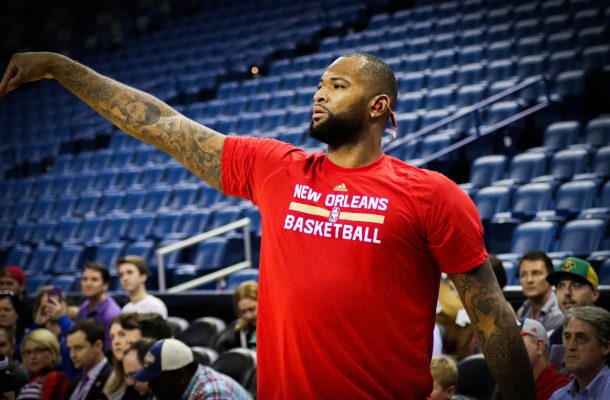
After the initial jubilation wore off from the New Orleans Pelicans trading for DeMarcus Cousins there was one big question: Can Alvin Gentry coach two bigs?
On the surface it’s a valid question to ask. Gentry made his name coaching the 7 Seconds or Less Suns, and got the Pelicans job from being the mastermind behind the Warriors small-ball run to an NBA championship. After a rough start to the season, the Pelicans started playing well after moving Davis to center on December 26th. Gentry’s offensive style is to play in transition and try to take the first, good shot–ideally before the defense gets set. The twin towers approach seemed at odds with what the Pelicans aimed to be.
It led to lots of comments like, Dell Demps built a Gentry-style roster for a Monty Williams coached team. And built a Monty-style roster for Gentry.
Except that isn’t how things played out after the All-Star break.
Pace is key to Gentry’s offensive system. Take a look at the Pelicans’ pace this season:
The team did not slow down much after the trade, and the Pelicans pace is virtually the same thing whether Cousins was on the court or off. It also matches up with the pace over the entire season. This puts the Pelicans in the top 10 of the league.
But pace can just be taking shots early in the shot clock, or influenced by opponents. Let’s take a look at the transition numbers:
With Cousins on the court the Pelicans scored a bit more of their total offense in transition than their season average. It’s less than the small-ball period, but by less than 2%. Not a huge difference. It still fits into what the Pelicans are trying to do.
Something to also keep in mind is the off court numbers for Cousins also includes the games which he missed. Cousins played in 17 of the 25 post All-Star break games. If the Anthony Davis/DeMarcus Cousins pairing was slower and more half court based, those off court numbers would show the Pelicans going back to their fast paced style. That isn’t the case.
Simply put: The Pelicans still play Gentry-ball with Cousins.
So, why does the Pelicans offense still play quickly when Cousins is on the court? It’s largely due to a oft-criticized part of his game: 3-point shooting.
Take a look at Cousins’ shot chart:
Cousins is shooting an absurd 45.7% from the top of the 3-point line. And a good chunk of those attempts come in transition with Cousins as the trailing man.
Let’s not pretend that Cousins is the fleetest of foot. He’s not racing down in transition like Anthony Davis, Solomon Hill, or Dante Cunningham are. And, hey, fair criticism is fair criticism, and some of this is probably due to laziness. So while Cousins doesn’t fly down the court after a defensive stop, he does get onto the other side of the court. By that point the opponent’s defense is trying so hard to stop a transition bucket that Cousins is wide open up top. And if the defense does a good job taking away an easy bucket, Cousins is there for the catch and shoot. The two graphs below illustrate it.
Almost all of Cousins’ 3-point attempts are catch and shoot, and most come in that “average” shot clock range which is just after transition basketball usually occurs.
But the best part of Cousins launching these 3’s? They are usually wide open.
Now, these tracking stats from NBA.com are not the best. Just because a shot is described as Tight or Very Tight doesn’t mean the defender has a hand up contesting the shot. But ignore those for now and take a look at Open and Wide Open. Almost all of the three-pointers Cousins takes fall in those two categories. Basically saying that no defender is within four feet of him when he launches from deep.
This is due to the transition style of Gentry-ball that the Pelicans play. The defense is collapsing to try and take away the easy basket at the rim. Cousins gets down the court a second or two behind the players out in transition, spots up on the 3-point line, and acts as a wide open outlet.
But there is also a downside to this 3-point shooting and the Pelicans playing in transition. That is Cousins is likely not being used as effectively as possible.
Take a look his touches with the Kings and Pelicans:
Elbow touches are significantly down per game. The elbow is where Cousins is at his best. He is able to attack off the dribble and make easy passes to cutting teammates. There is a reason the Kings ran their offense through him there.
This is something Gentry and the Pelicans coaching staff needs to work on this offseason and next year. It shouldn’t be too hard to tell the team to get Cousins the ball in his sweet spot more often. But this also takes two, and in the half court Cousins often hangs around the 3-point line too often.
In the final (healthy) stretch of the regular season the Pelicans showed they could be a force offensively. With the pressure for the playoffs looming next year hopefully the coaching staff, and Cousins, can use training camp to put it all together.
Agree or disagree? Let us know on twitter @NolaJake and @BourbonStShots!

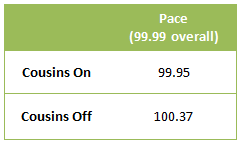
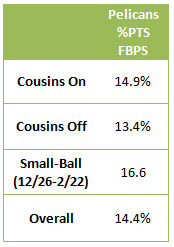
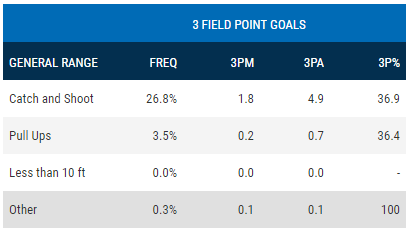
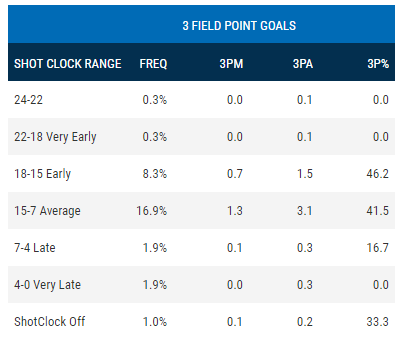
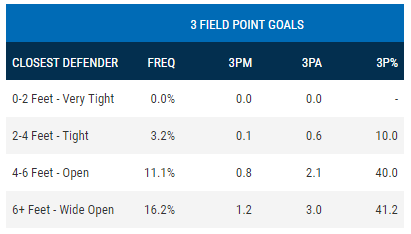





Pingback: NBA News of Pelicans News Around the Web (4-17-2017) | Basketball News Pelicans News Around the Web (4-17-2017)